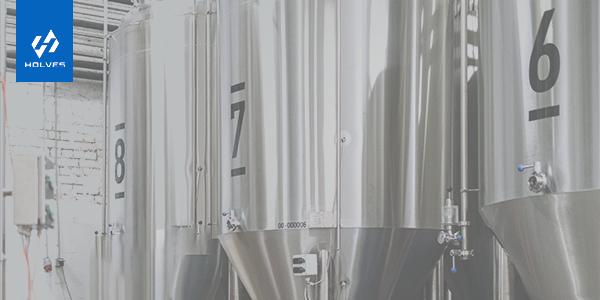
Difference in the meaning of seed tank and fermenter
A seed tank is a type of equipment used for microbial culture and is primarily used to prepare the seeds for microbial fermentation. In the seed tank, microorganisms are able to form a large number of replicated seeds through cultivation and proliferation, but subsequent reactions are used for fermentation when they are transferred to the fermenter.
Fermenters are also a kind of equipment used for microbial culture, the difference is that fermenters are used for the production of preparations for microbial fermentation (such as bacteriocins, antibiotics, proteins, etc.). Fermenters usually consist of vessels, agitators, aeration devices, control systems and other equipment. Their main features are large volume, high production efficiency, automatic control, and the ability to perform continuous production.
Structural differences between seed tanks and fermenters
1. Function
The seed tank is mainly used as an incubator for microbial seeds, while the fermenter is mainly used for the production of preparations.
2. Structure
Seed tanks are relatively small and simple; fermenters are usually larger than seed tanks, have more complex mixing and aeration systems, and are also easier to automate and control.
3. Operation method
Seed tanks usually use mixers for horizontal or vertical mixing; fermenters use a combination of mixing systems, aeration, and heating to achieve control of the culture material.
4. Application scope
Seed tanks are mainly used in microbial proliferation, fermentation stabilization and storage; fermentation tanks are widely used in pharmaceutical, food, brewing, chemical and other industries to produce various fermentation products.
Although similar in appearance, seed tanks and fermenters have significant differences in function and structure, and need to be selected according to specific production needs. Among them, the fermenter is more widely used, usually for industrial production, with high production efficiency and controllability.
Here is the Holves brand website, https://www.bjholves.com/. Providing different types of industry information, technical knowledge, and solutions, we have developed and produced several new laboratory fermenter, bioreactor, tangential flow filtration system and other equipment to meet your needs from experimental to industrial production.
More questions to solve?
More Questions
More Questions
[Ceramic Membrane Filtration] Ceramic membrane filtration is a physical separation process that uses ceramic materials with porous structures to separate particles, microorganisms, and dissolved substances from liquids....
[Tangential Flow Filtration] The Application of Tangential Flow Filtration Cassettes...
[Four-Piston Diaphragm Pumps] What is a Four-Piston Diaphragm Pump? How Does a Four-Piston Diaphragm Pump Work? What Are the Key Advantages of Four-Piston Diaphragm Pumps?...
[Photobioreactor] Photobioreactors are specialized cultivation systems designed to grow photosynthetic microorganisms such as microalgae, cyanobacteria, and other photosynthetic cells under controlled environmental conditions. Lab-scale photobioreactor systems serve as...
[Fermenters] Optimizing Fermenters for Enhanced Production...
[Bioreactors] Biological Reactions in Bioreactors: Advanced Solutions for Efficient Fermentation...
[Tangential Flow Filtration] Tangential Flow Filtration (TFF) is a separation process widely used in various industries, especially in biopharmaceutical manufacturing, water treatment, and chemical processes....
[Small Spray Dryers] Learn the Basics of Small Spray Dryers...
[Fermenter] You can find the answer to the question about fermenter feed supplement……...
[Fermenter] Pay attention to these things when clearing the stainless steel fermenter to prevent secondary contamination....
